

Chiang Rai -Old Town Chiang Saen
This route takes you to a town that’s neither too big nor too small—but just right to warm your heart every time you arrive. Chiang Saen is one of northern Thailand’s oldest cities, rich in history and once the proud capital of the Lanna Kingdom. Here, the past lingers beautifully in the ancient city layout, sacred ruins, historic architecture, and treasured artifacts—all telling stories of a once-glorious civilization. Set along the Mekong River at the very edge of Thailand, where the country meets Laos, Chiang Saen is more than a historical site—it’s a vibrant crossroads of cultures and travelers. Though centuries have passed, the town remains alive with charm and character. Walk its streets, feel its rhythm, and you’ll see why Chiang Saen is a living legacy that continues to captivate every soul who visits.



1

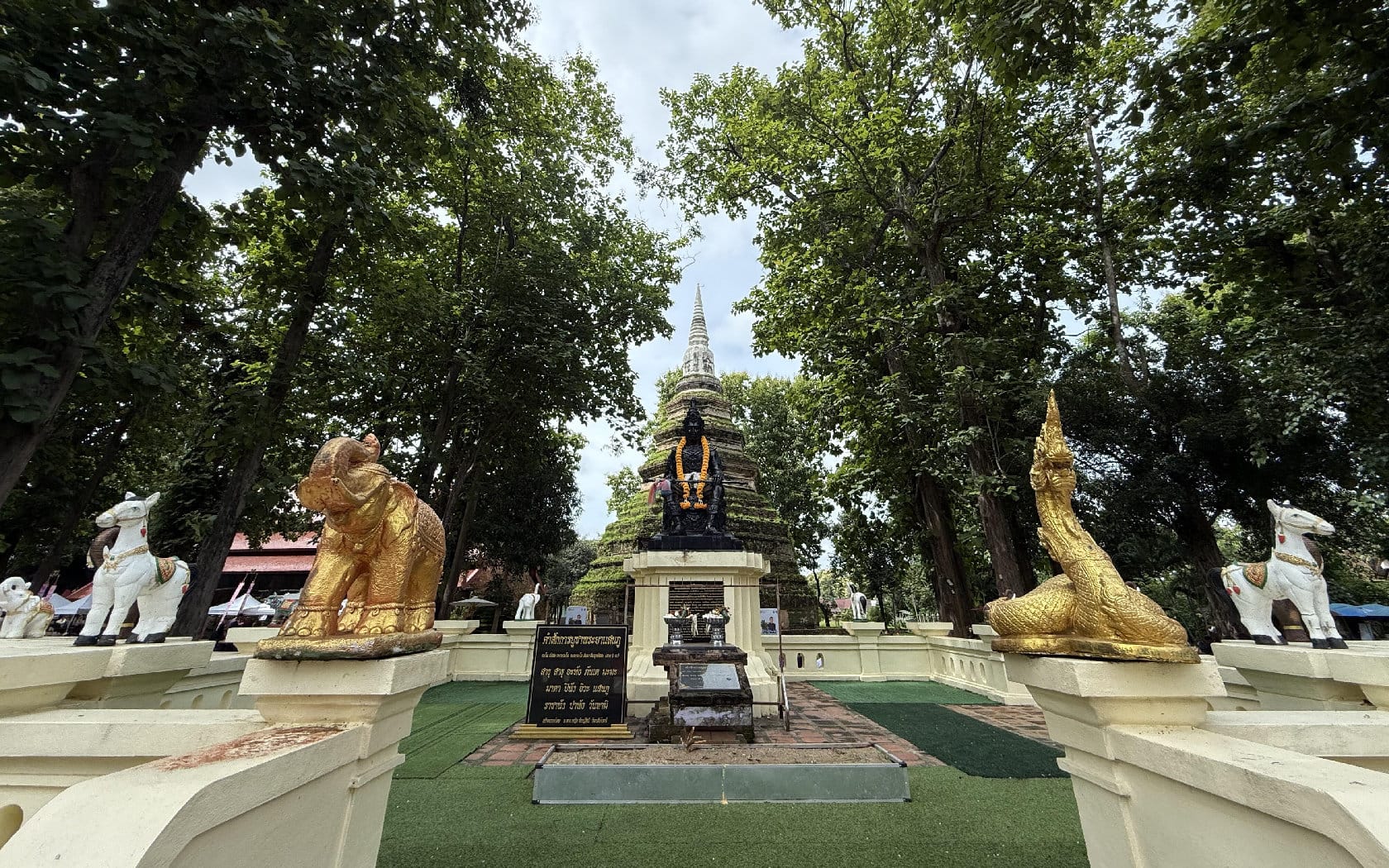


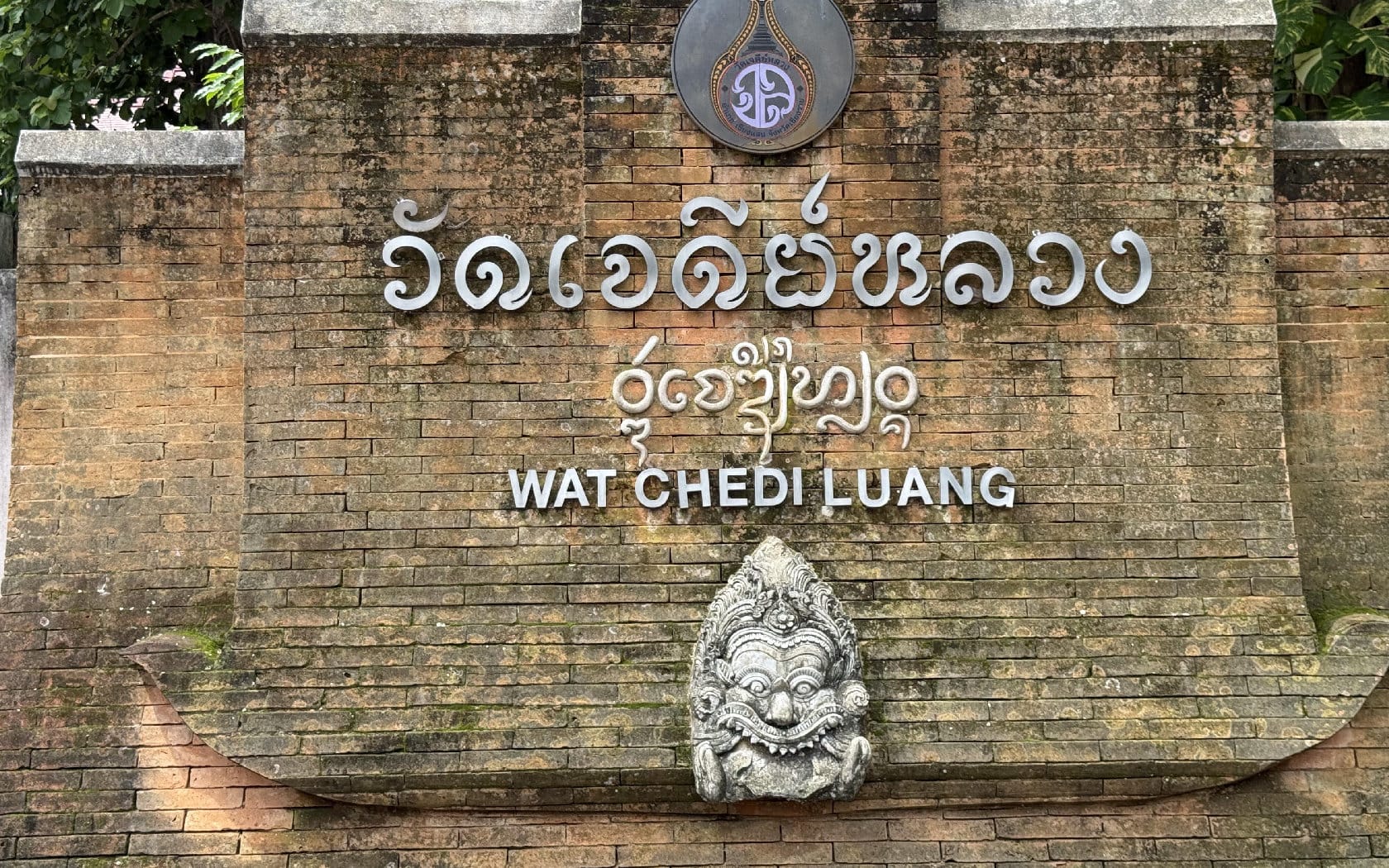
Wat Phra That Chedi Luang
Step into the spiritual soul of ancient Chiang Saen at Chedi Luang, the town’s most revered temple and once a central sanctuary of the Lanna Kingdom. Built by King Saen Phu, the third ruler of Lanna, this historic temple was one of 73 within the city walls—but none stand quite as majestically. At its center rises a stunning octagonal chedi, soaring 88 meters high with a 24-meter-wide base—the largest Lanna-style bell-shaped stupa in all of Chiang Saen. This towering landmark once enshrined a nearly 700-year-old Buddha image, originally crafted from stucco. The temple’s main viharn (assembly hall) showcases traditional Lanna architecture, easily spotted by its striking gable design—three tiers in front, two in the rear—a true testament to the elegance of the era.
Opening Hours: Daily from 07:00–18:00
Getting There & Parking:
> Located in the heart of Chiang Saen, just 250 meters from Wat Pa Sak
> Easily accessible by tricycle (samlor), motorcycle taxi, or on foot
> For those driving, parking is available along the street in front of the temple.
2

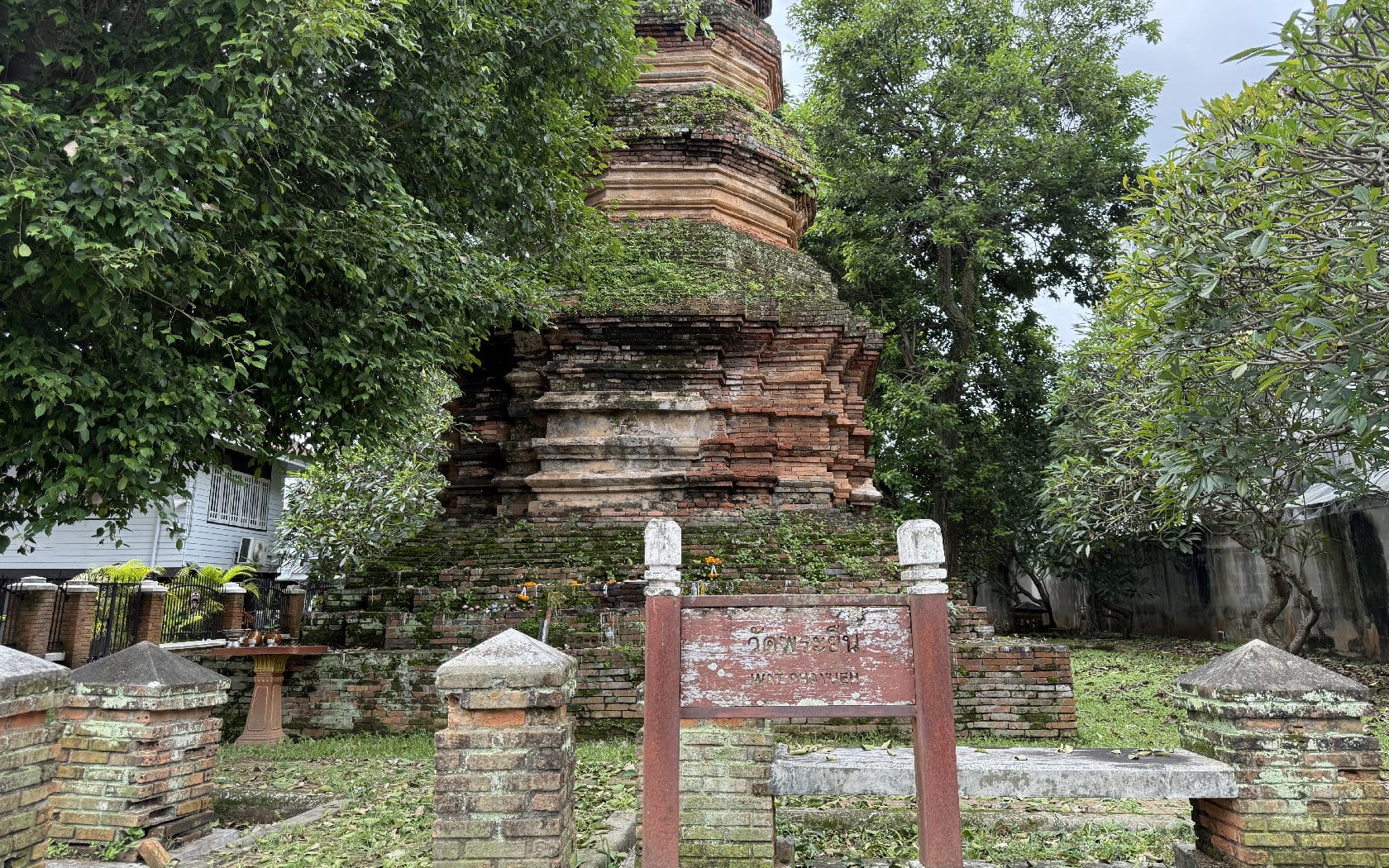

Wat Phra Yuen
The 700-year-old Wat Phra Yuen is one of the oldest and most historically rich temples in Chiang Saen. Although it is now an abandoned site, the temple continues to captivate visitors with its stunning octagonal chedi, which was originally built to enshrine 140 sacred relics. The chedi is situated on a triple-tiered square base, with each level perfectly aligned at 8 meters wide, showcasing the architectural precision of its time. While the viharn and other structures have long since disappeared, the chedi remains remarkably intact. Adjacent to the temple is the Chiang Saen Immigration Office, which is housed in a beautifully preserved wooden heritage building—one of the finest examples of its kind in Thailand.
3


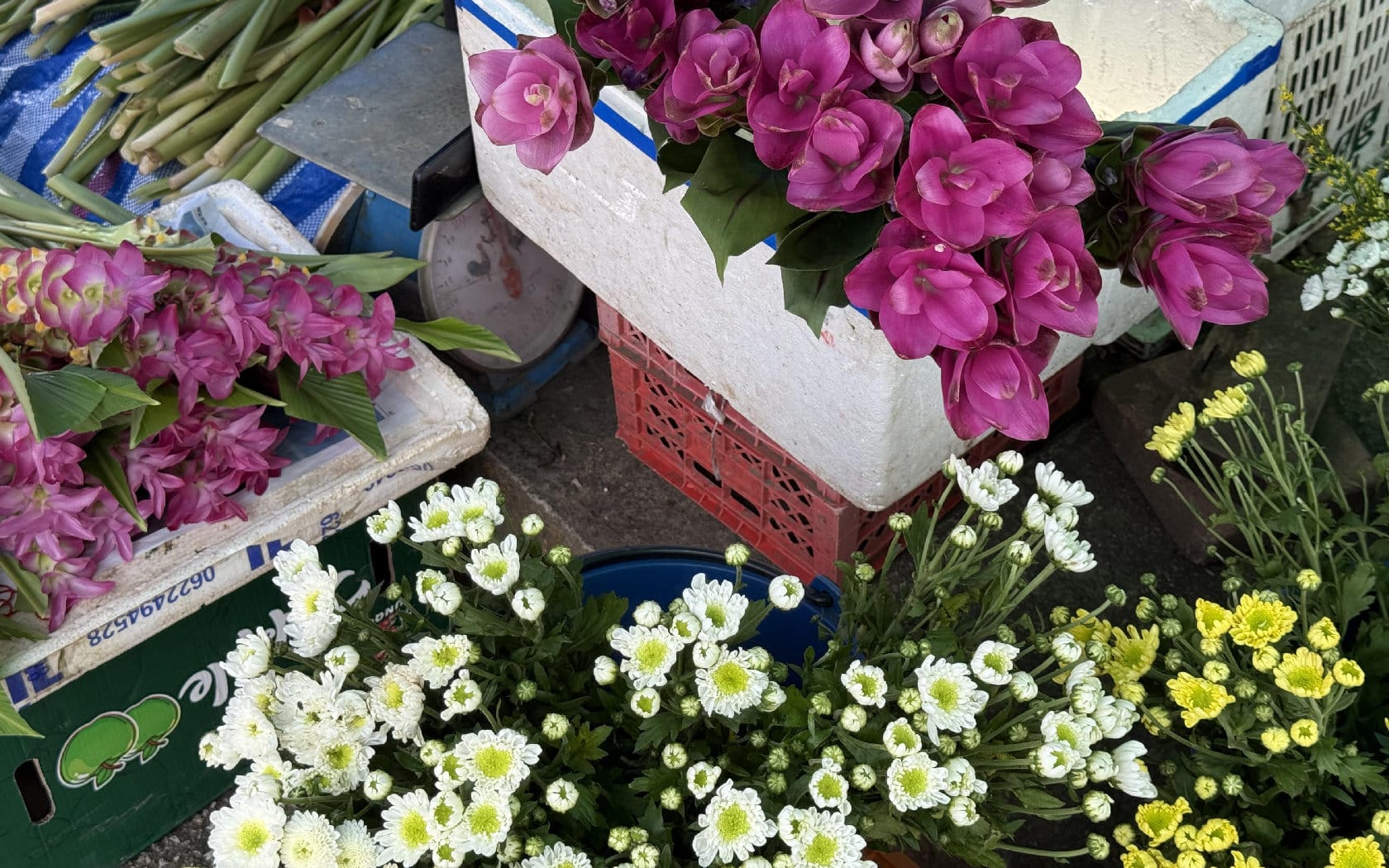

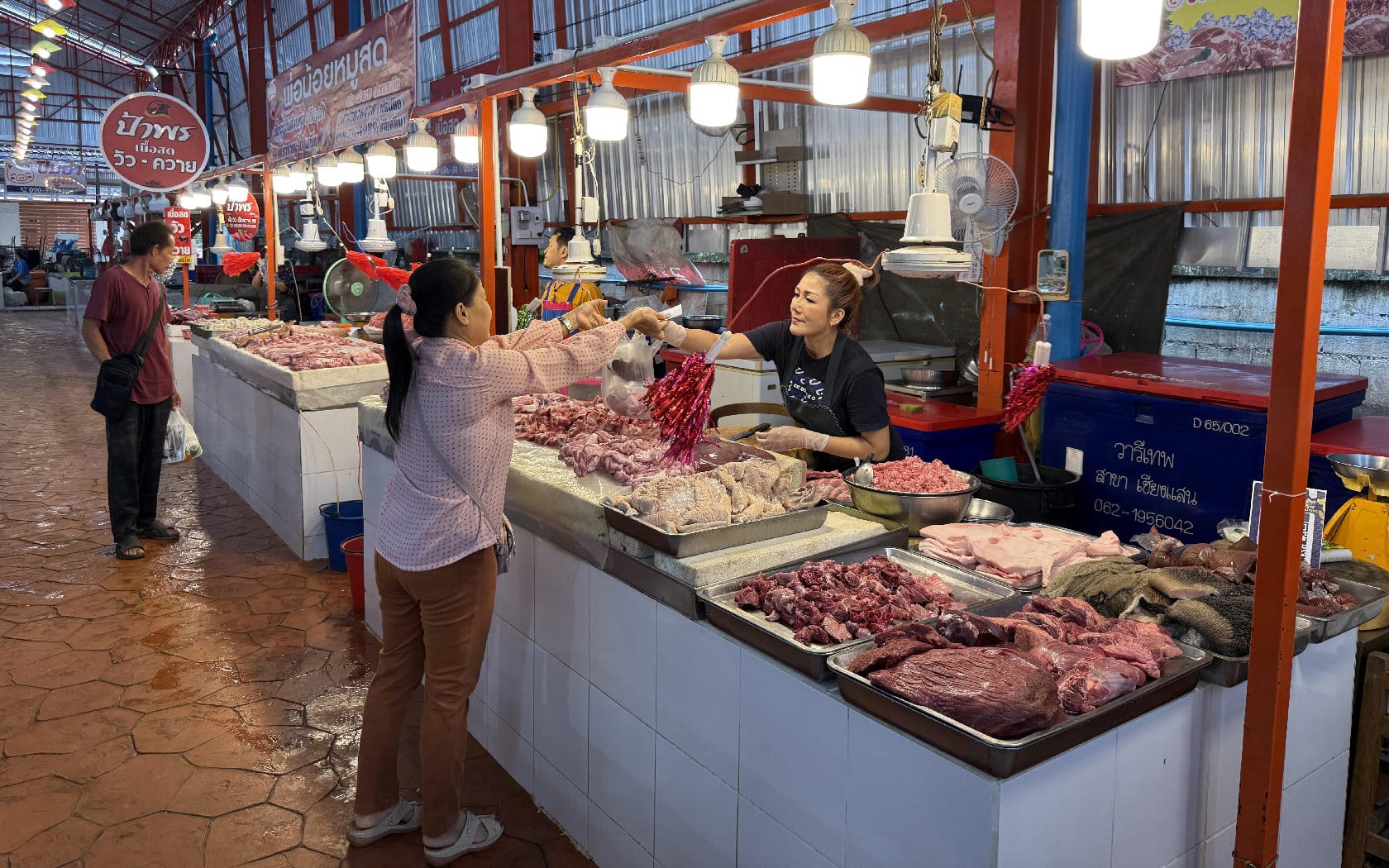

Sin Somboon Market
Sinsomboon Market is a vibrant local hub that has served as the commercial soul of Chiang Saen for more than 100 years. Though the original wooden structure was lost to fire, the market has been functionally rebuilt. This bustling market is a treasure trove of local goods, everyday essentials, and fresh regional produce, much of it brought directly from the hills by ethnic Tai Yai villagers from Doi Mae Aep. Their friendly prices and warm smiles make every visit feel pleasant. Open 24 hours a day, the market is at its liveliest in the early morning, when the scent of Tai Yai cuisine fills the air—a must-try for any foodie. After a hearty local meal, take a short stroll behind the market to Wat Prasat Khum, home to a beautiful brick-and-stucco stupa with a rounded bell-shaped top—the most iconic chedi style in Chiang Saen.
Opening Hours: Daily, 24 hours
Clean restrooms are available for only 5 THB.
4

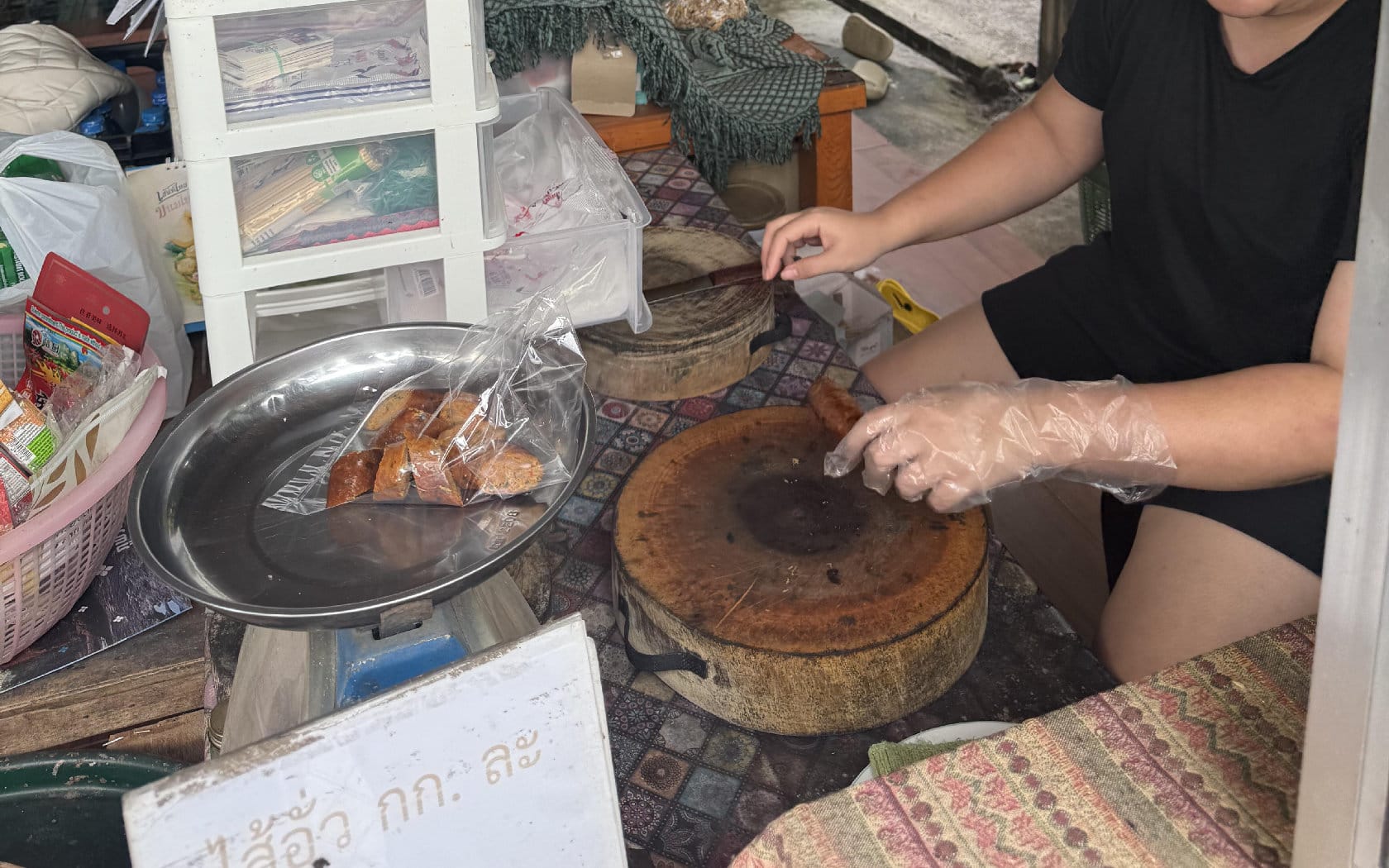
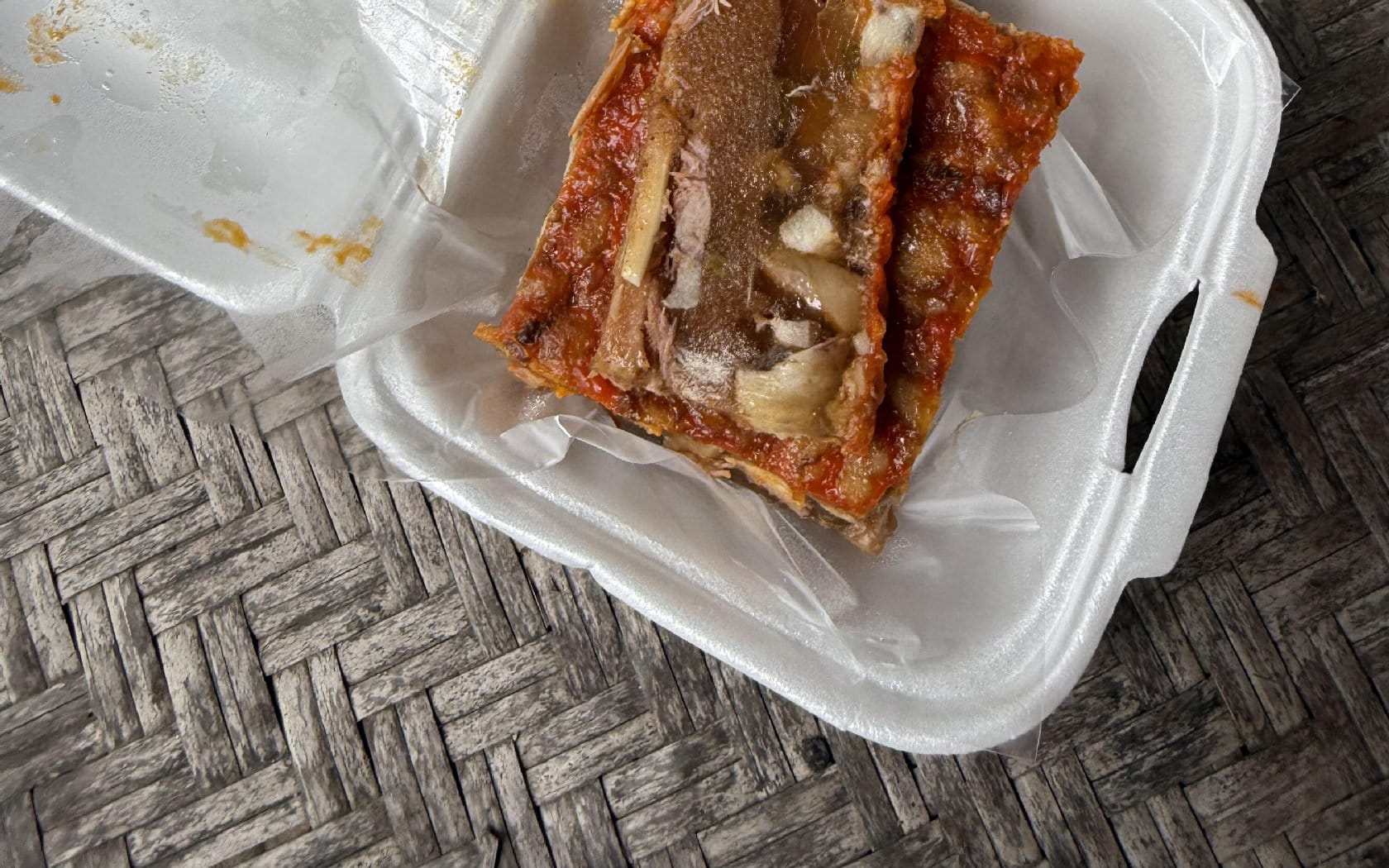

Sai Oua Chiang Saen Shop
This is the kind of place that only true locals know about. Famous for its Chiang Saen-style Sai Oua (northern Thai sausage), this hidden gem has long been a favorite among residents. The sausage is available in two flavors: spicy and mild, priced at an irresistible 40 THB per 100 g. Another must-try dish here is the iconic northern specialty, Kaeng Kradang (jellied pork curry). What sets this version apart? The curry paste is expertly spiced and, unlike others, it’s made without gelatin, allowing you to experience the authentic taste and texture as it’s meant to be.
Once you’ve had your fill, you can continue exploring—right next door is Wat Nanthakhwang, one of Chiang Saen’s most significant ancient sites.
Opening Hours: Daily from 07:00 to 19:00 (or until supplies last).
5
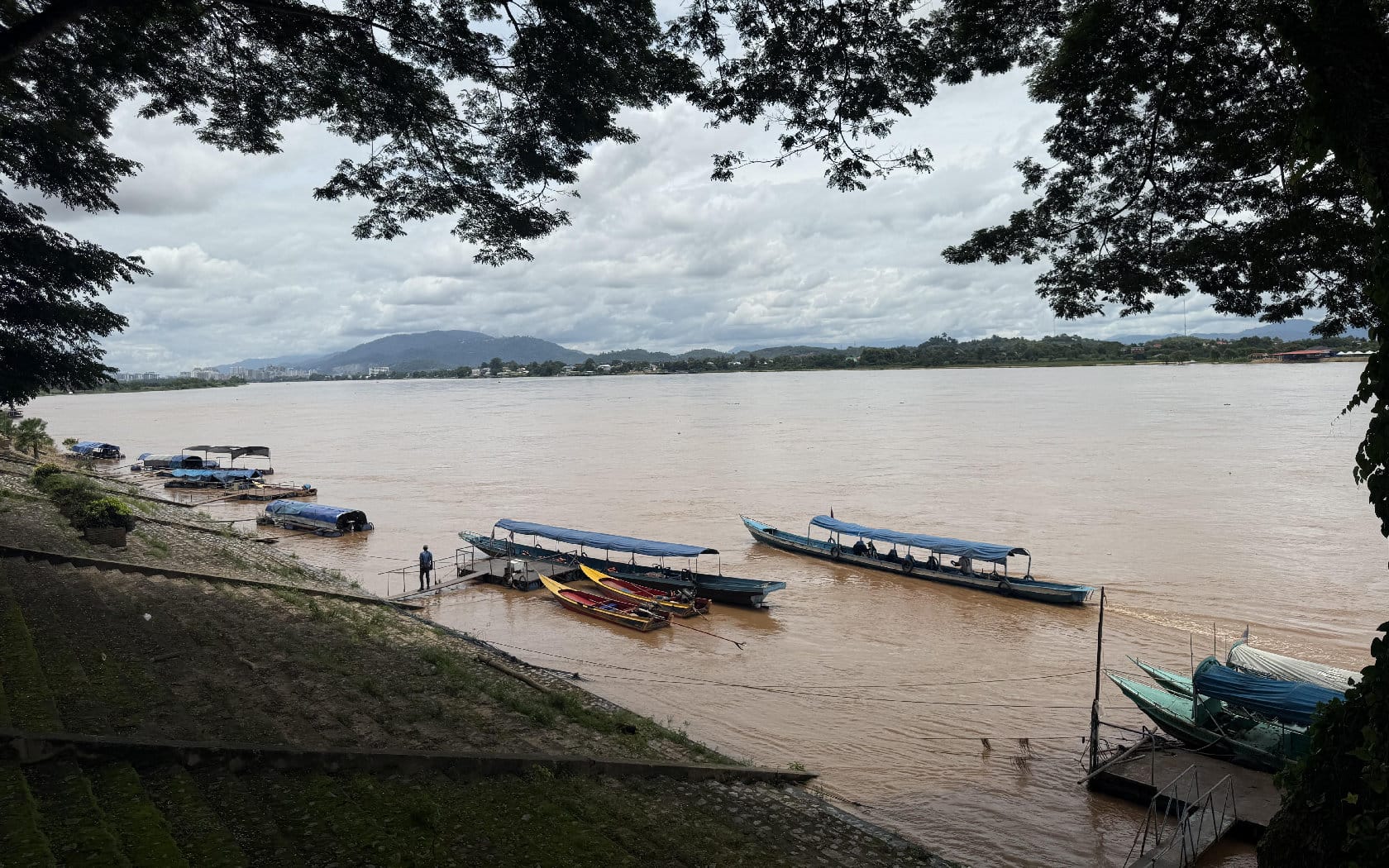
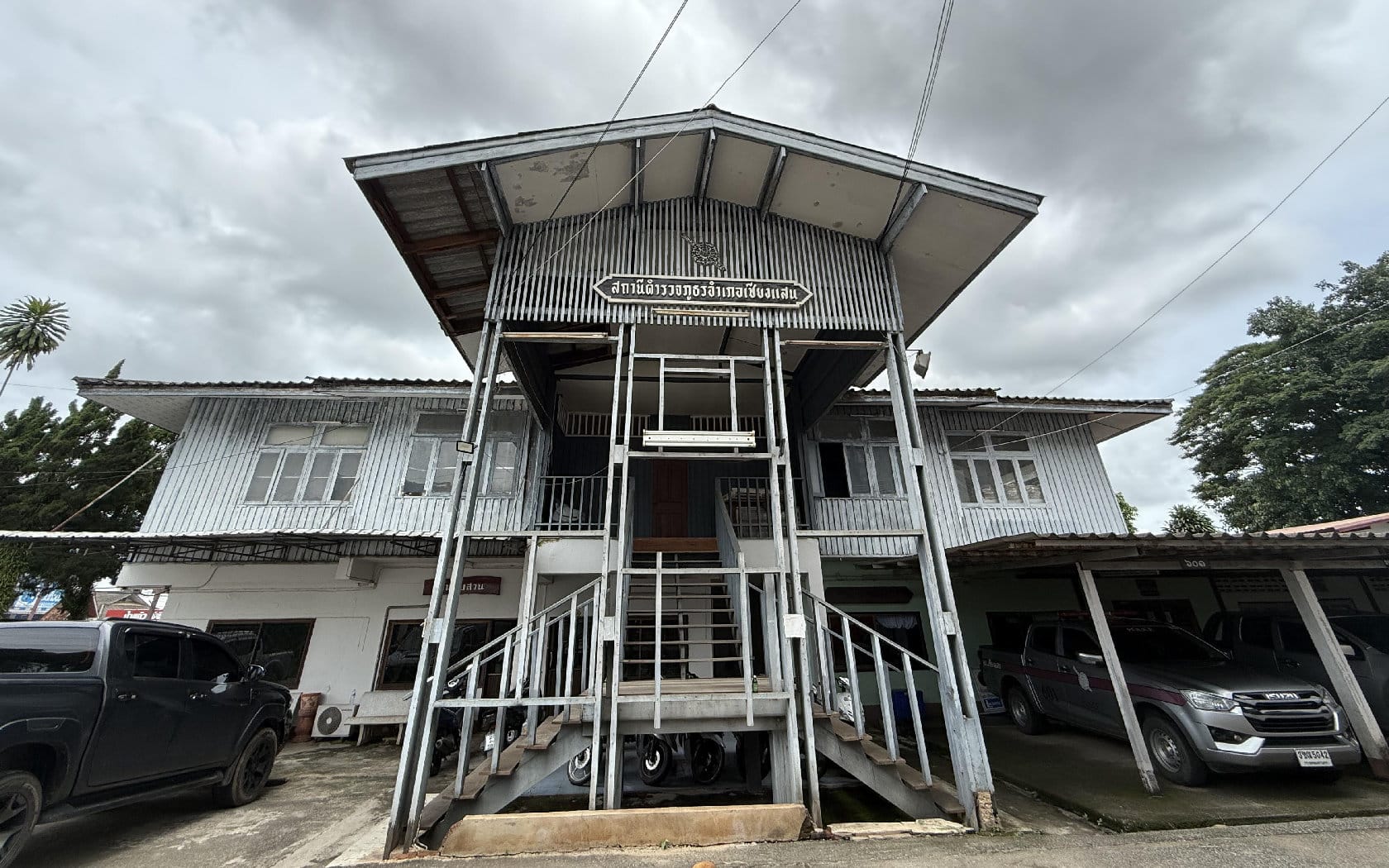
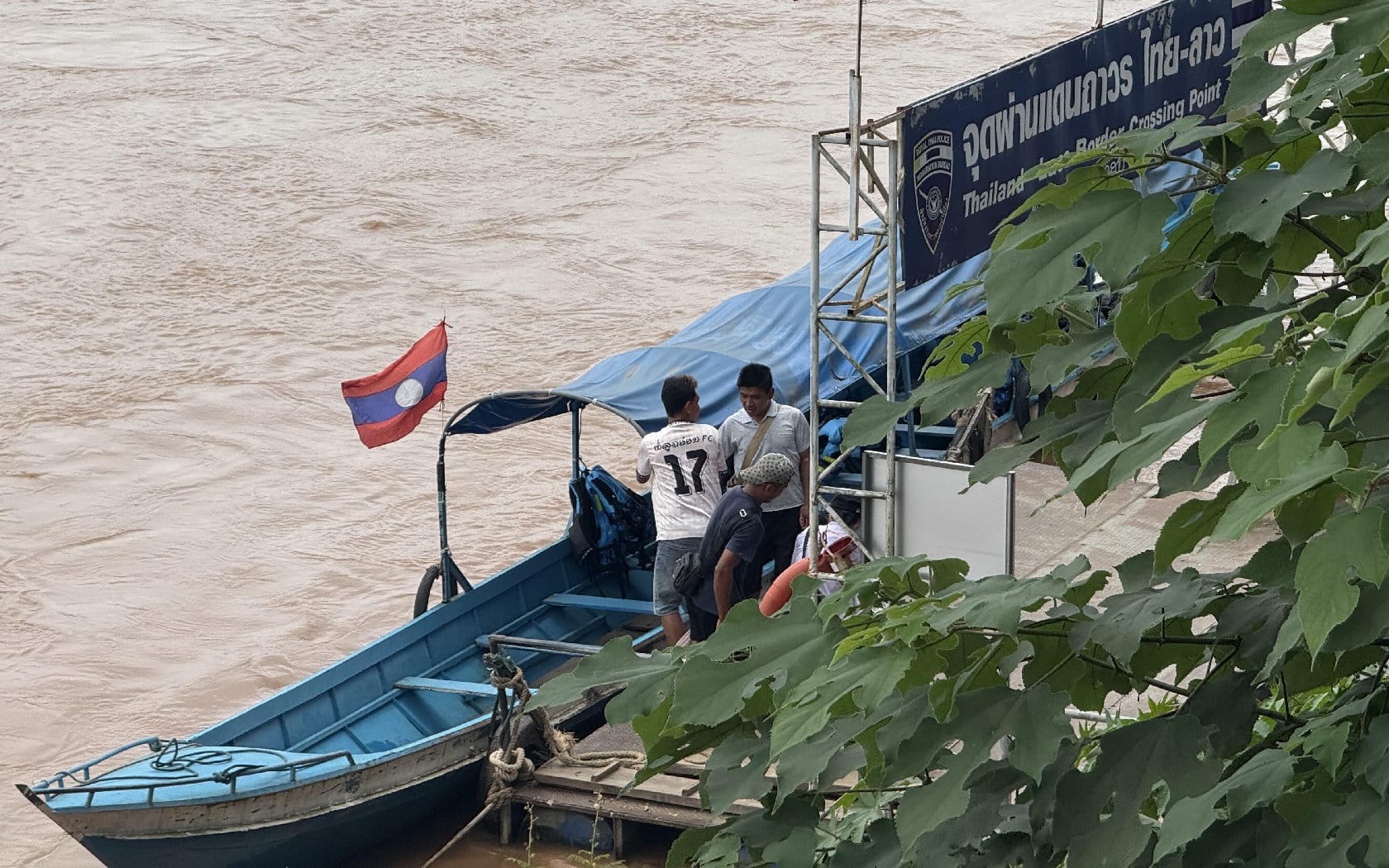


Mekong Riverfront
Take a leisurely stroll through Chiang Saen, and you’ll soon arrive at the majestic Mekong River—a natural landmark that marks Thailand’s northernmost point. Right across the river is Lao, featuring a striking skyline dominated by grand buildings, including the famed Kings Romans Casino, which is part of a Chinese-backed special economic zone. Just upstream lies the well-known Golden Triangle, connecting Thailand, Lao, and Myanmar. This area is also where the Mekong meets the Ruak River, creating a breathtaking sight with a rich history. Chiang Saen serves as a permanent border crossing between Thailand and Lao. You can hop on a local boat—whether a longtail or a covered boat—to cross the river or enjoy a scenic cruise along the Mekong. It’s an easy and affordable adventure, with boats operating daily from 8:00 to 18.00, accommodating up to 15 people, with prices ranging from 800 to 1,500 THB.
Are you considering a visit to Lao? Thai nationals don’t need a passport—just bring your Thai ID card! A quick stop at the Chiang Saen District Office (just a short walk from the riverside) allows you to apply for a border pass and enjoy up to three days in Lao.
Every Saturday evening, the quiet riverfront transforms into a vibrant walking street, lined with community-run stalls offering handmade crafts, local eats, and souvenirs—all set against the backdrop of the mighty Mekong.
6
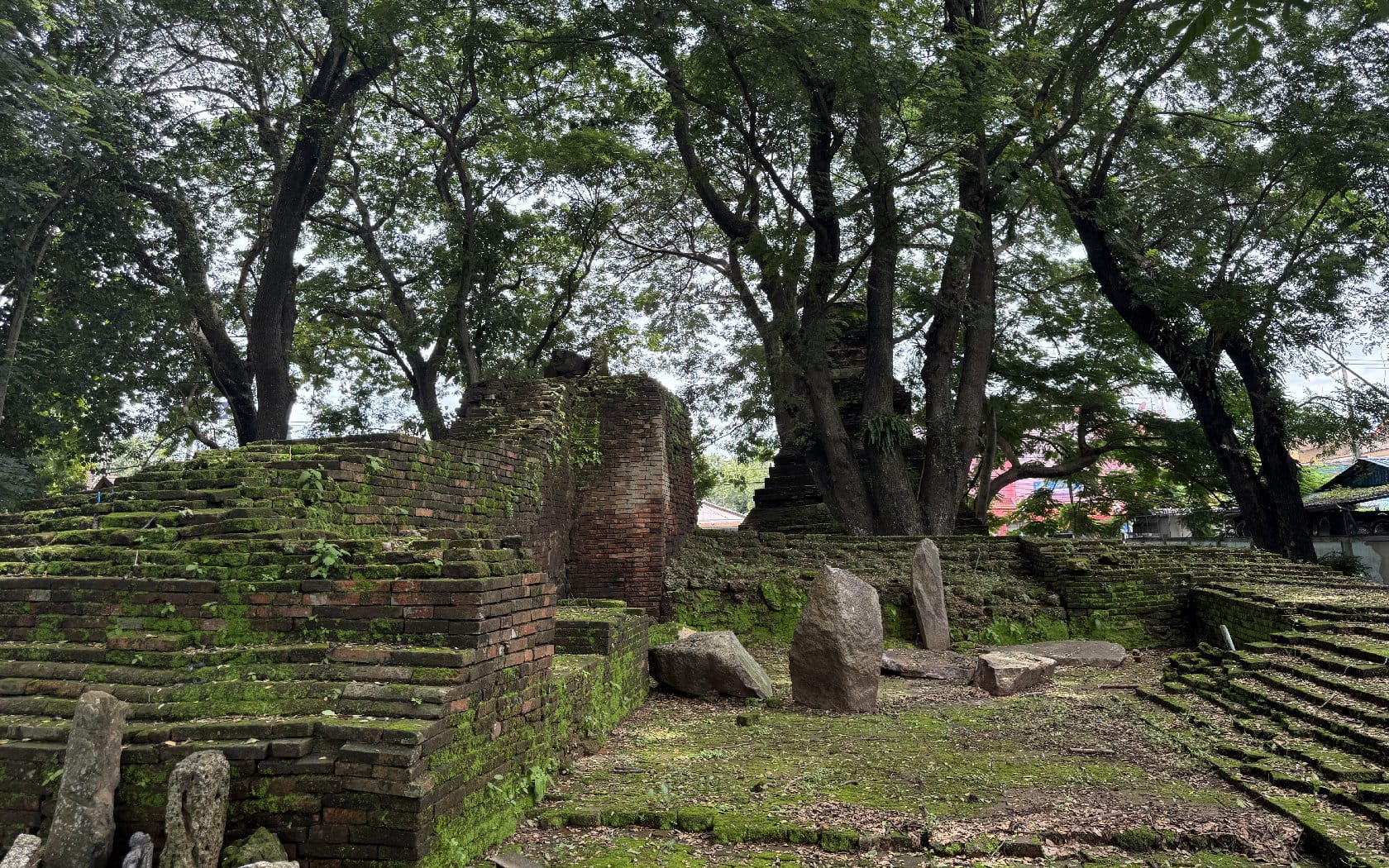
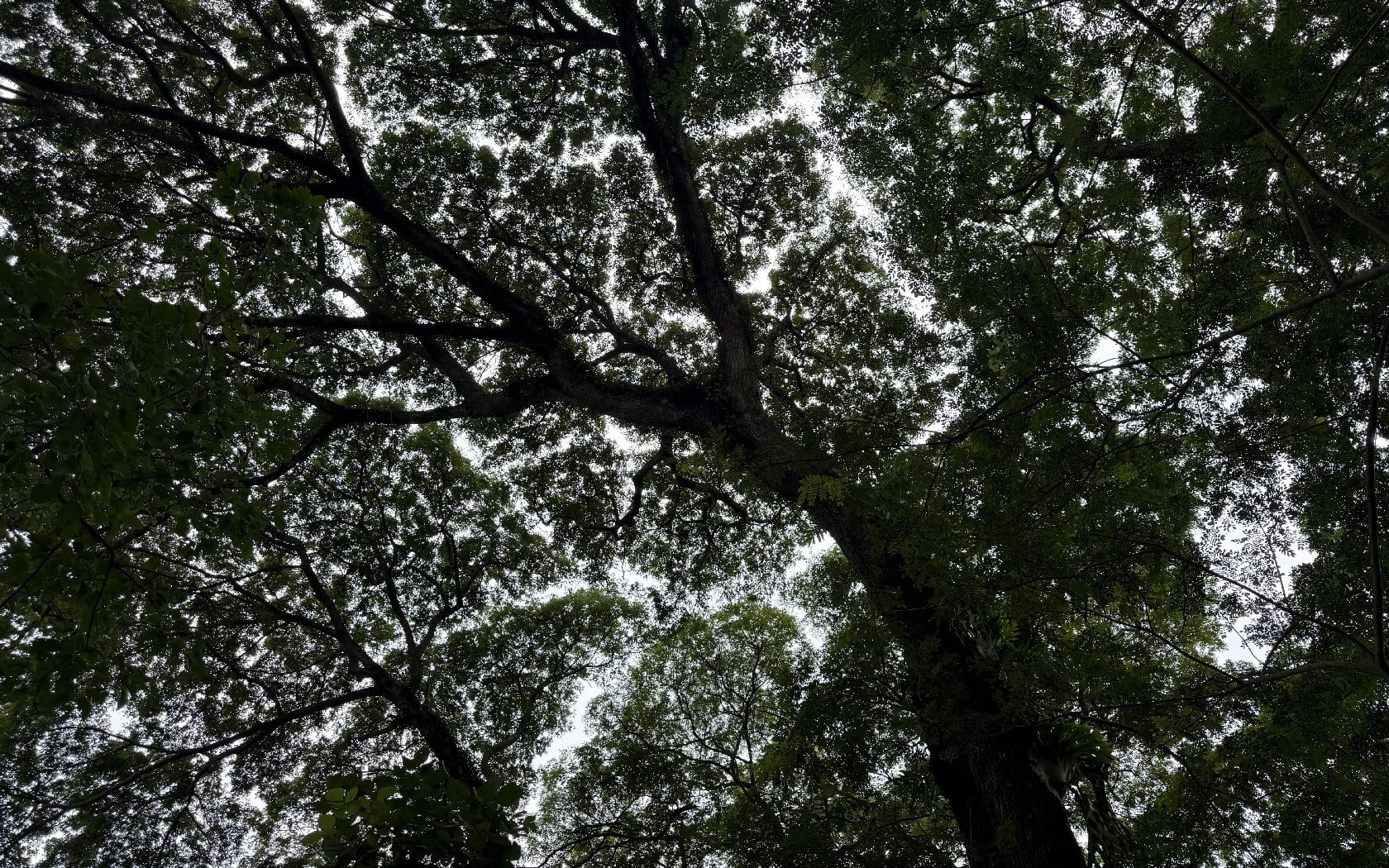

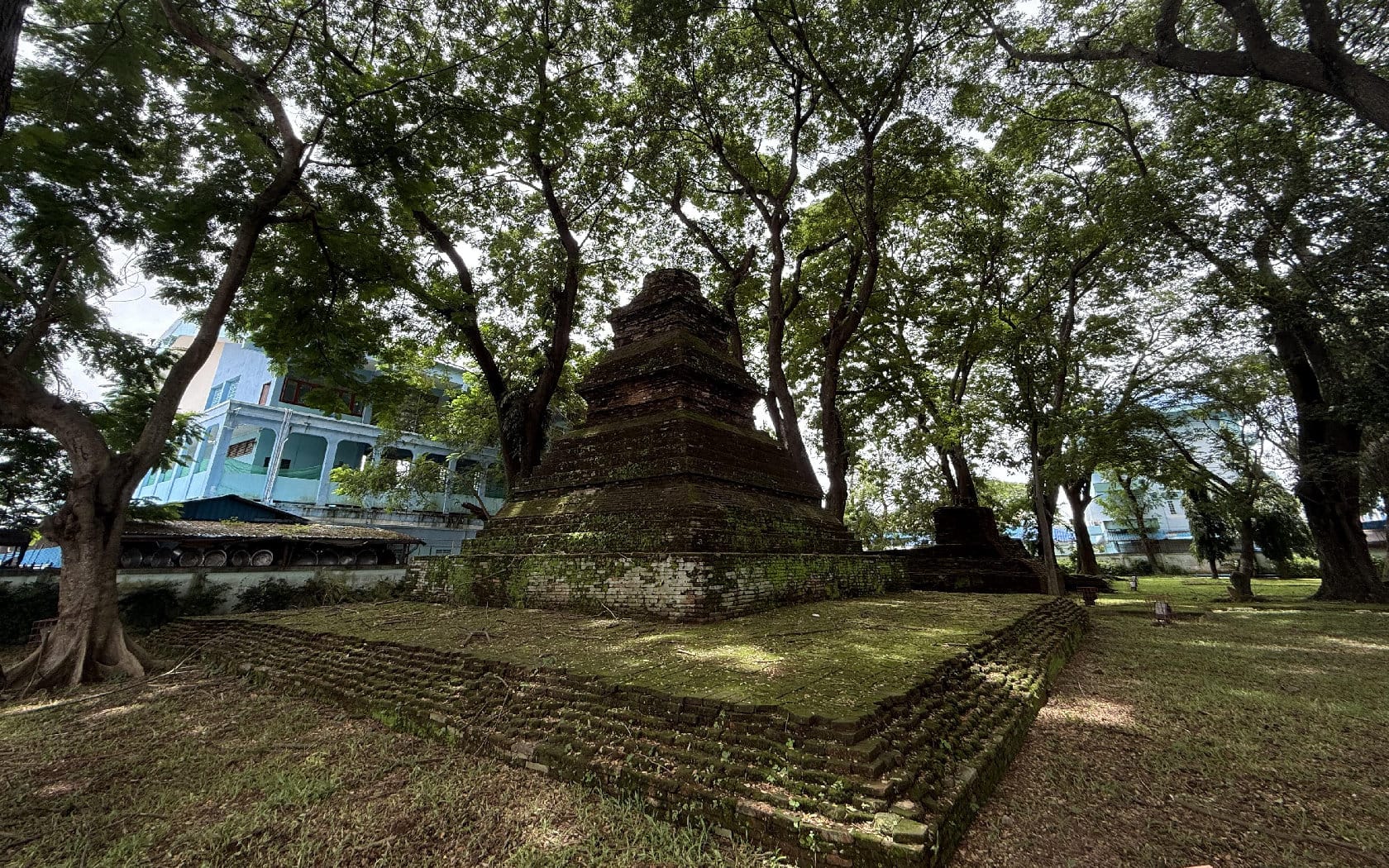
Wat Nangfa Kaephueak
This ancient temple is believed to have once stood within the royal palace grounds of old Chiang Saen. But beyond its age and architecture, this temple holds a special place in local hearts—known as the “Temple of Love.” Why? Legend has it that a great king built this temple as a tribute to his beloved, a princess from the Lan Chang Kingdom. That act of devotion still echoes today, drawing locals who come to pray for true love or their soulmate. The temple’s iconic Lan Chang-style stupa, the only one of its kind in Chiang Saen, stands as a testament to this royal romance. When the temple was completed, an astonishing 1,000 monks were ordained to celebrate the opening of its main hall.
And don’t miss this heartwarming detail: look up into the branches of the sacred Bodhi tree, and you’ll see the leaves forming the shape of a heart—a natural symbol of the temple’s timeless connection to love.
7
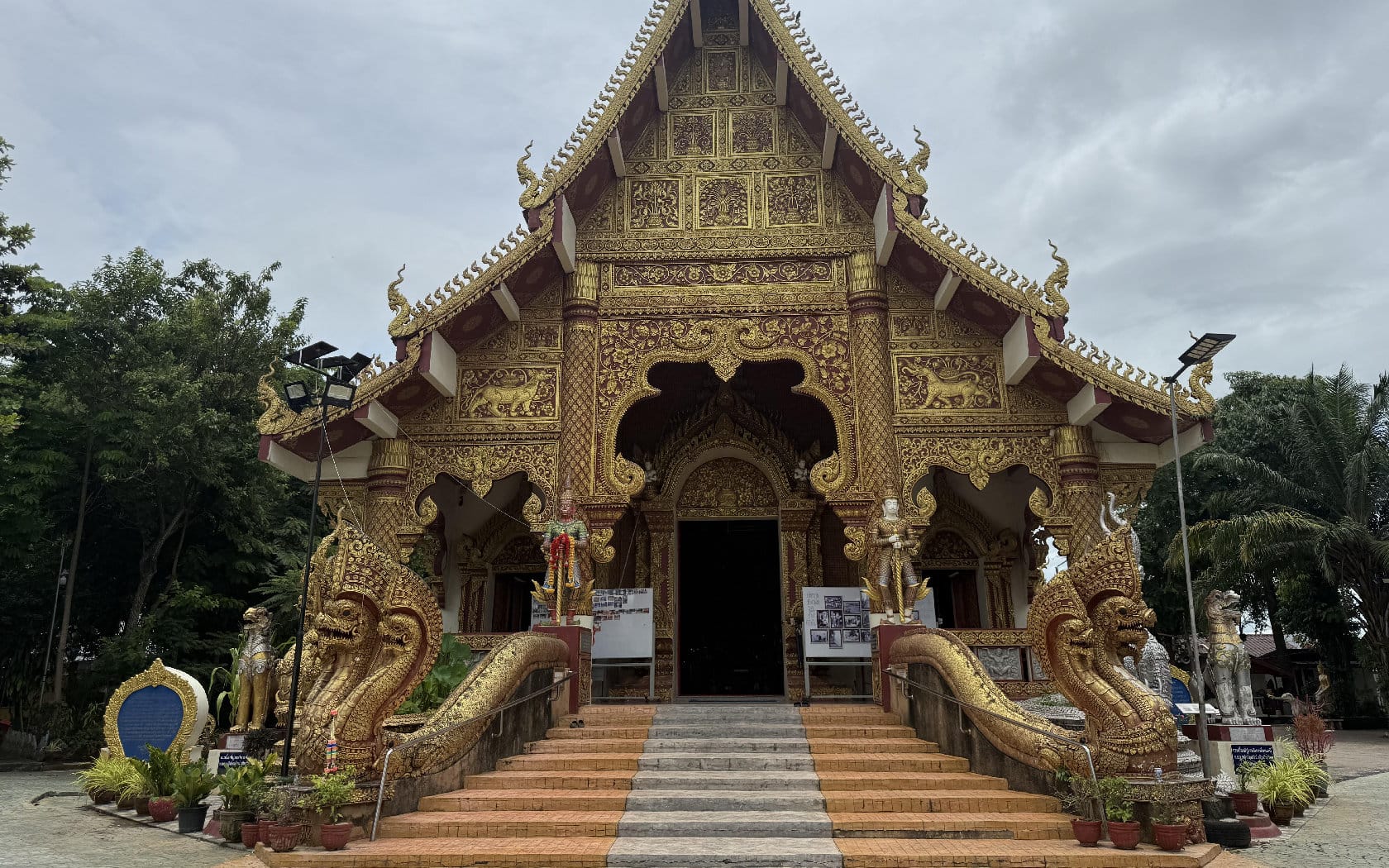
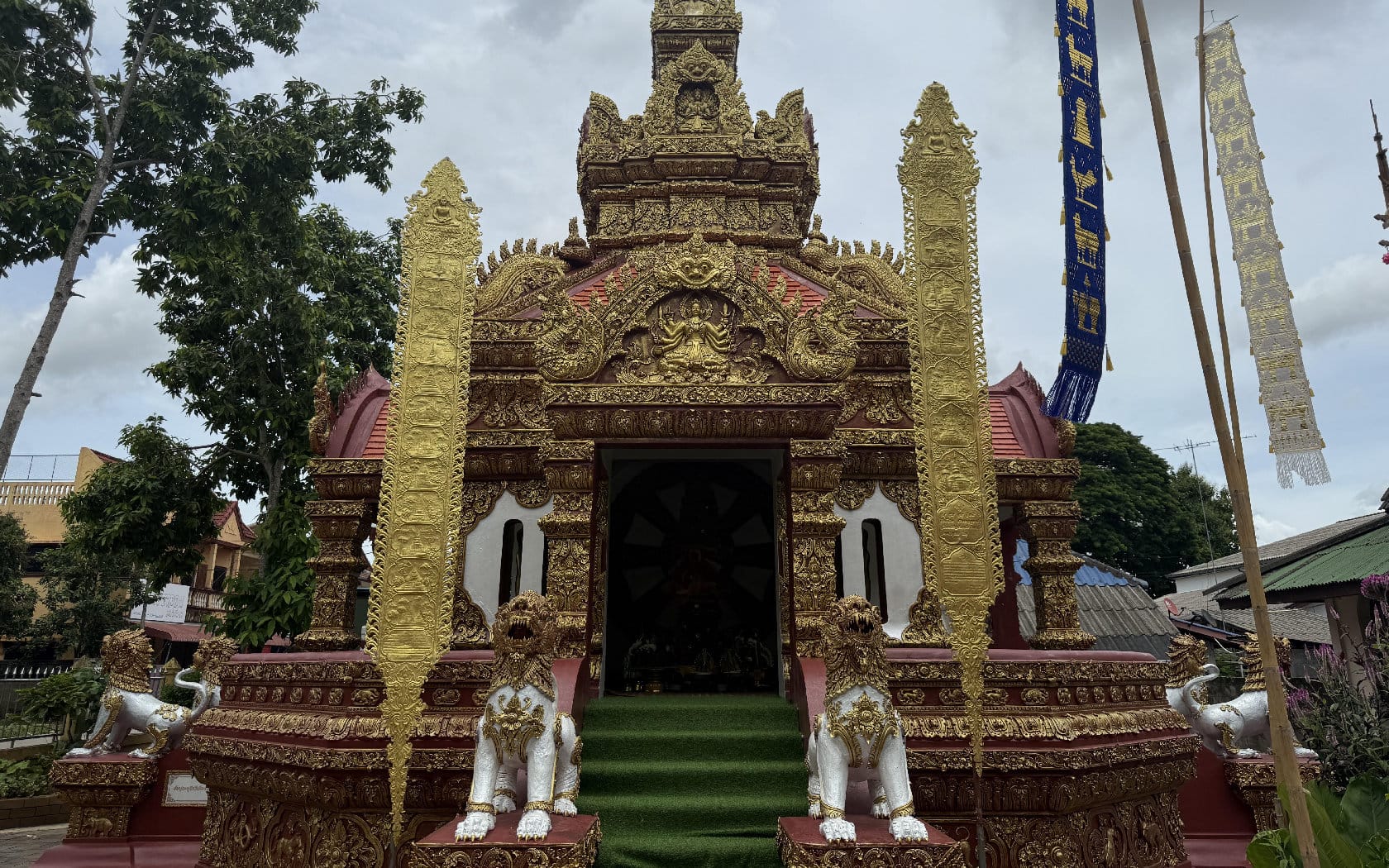
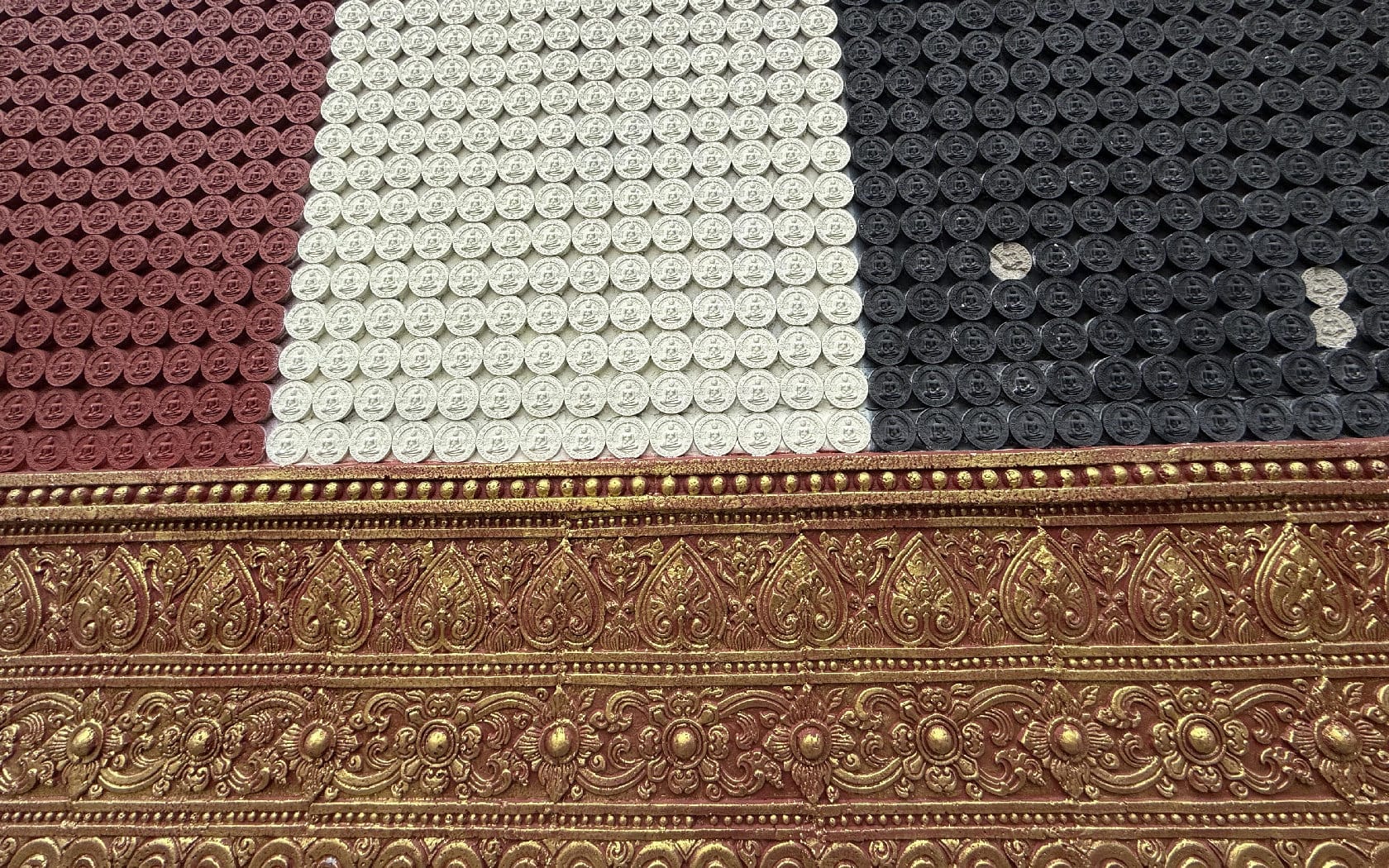
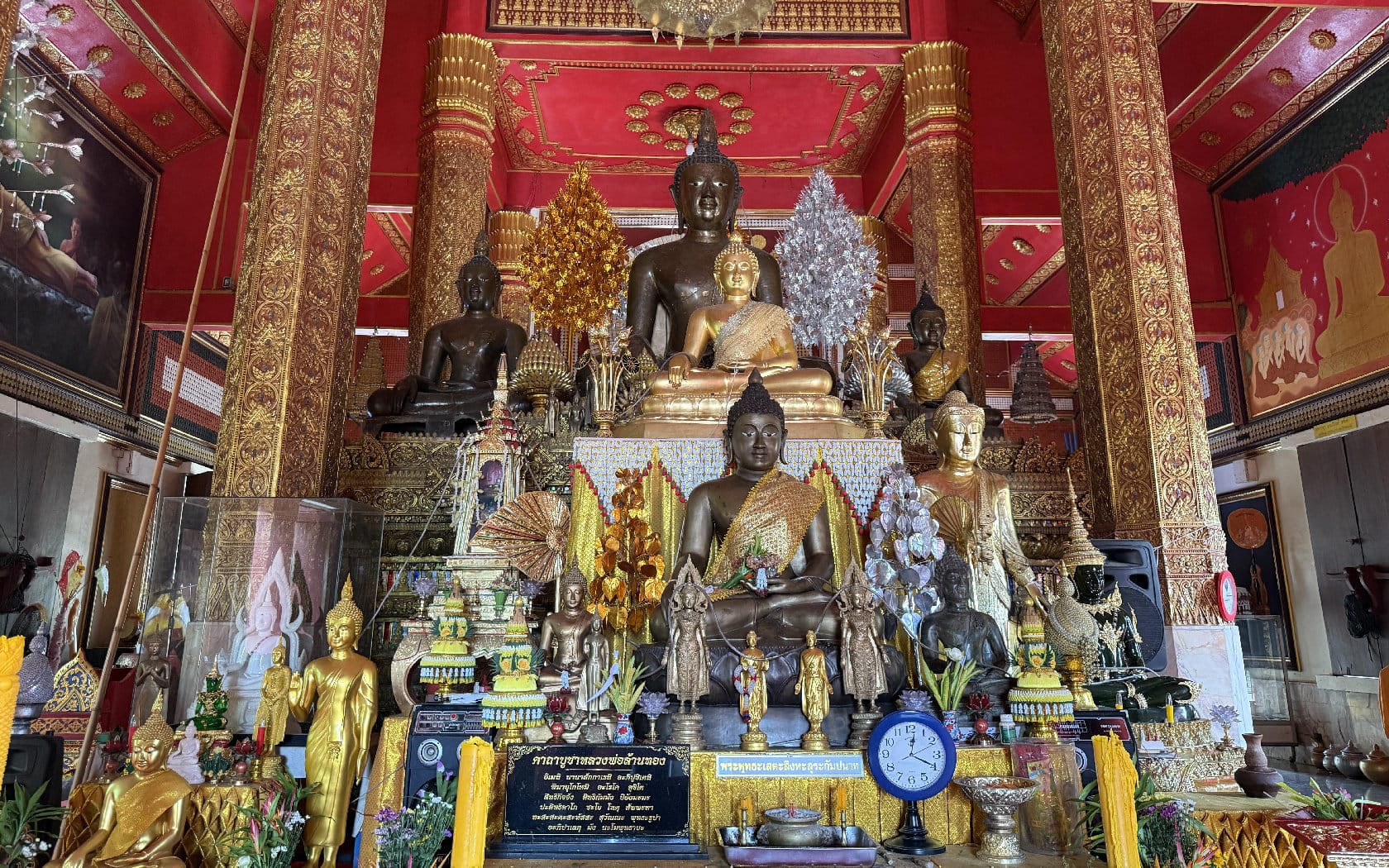
Wat Phra Chao Lan Thong
Step back in time at Wat Phra Chao Lan Thong, a temple over 500 years old and home to the largest golden Buddha image in Chiang Saen. Crafted in classic Lanna style from pancha loha (a sacred five-metal alloy), this revered statue gets its name—Lan Thong, or “a million gold”—from ”the impressive amount of gold used in its creation. But this temple is more than just a place of worship—it’s also where you’ll find the Chiang Saen City Pillar Shrine, known locally as Wat Sadue Mueang, or “the Navel of the City.” This sacred site is considered the symbolic heart of Chiang Saen.
Behind the main hall, a majestic ancient stupa rises into view—one of the most beautifully preserved historic structures in the region.
A Secret Walking Path to the Next Stop
From Wat Phra Chao Lan Thong, most visitors follow the main road to reach Wat Mung Muang. But if you’re up for a more local, hidden route, take the small alley behind the temple. This path leads you through a quiet neighborhood, where charming old Chiang Saen homes line the way—each showcasing the town’s unique and storied architecture. It’s a peaceful, picturesque stroll through living history.
8
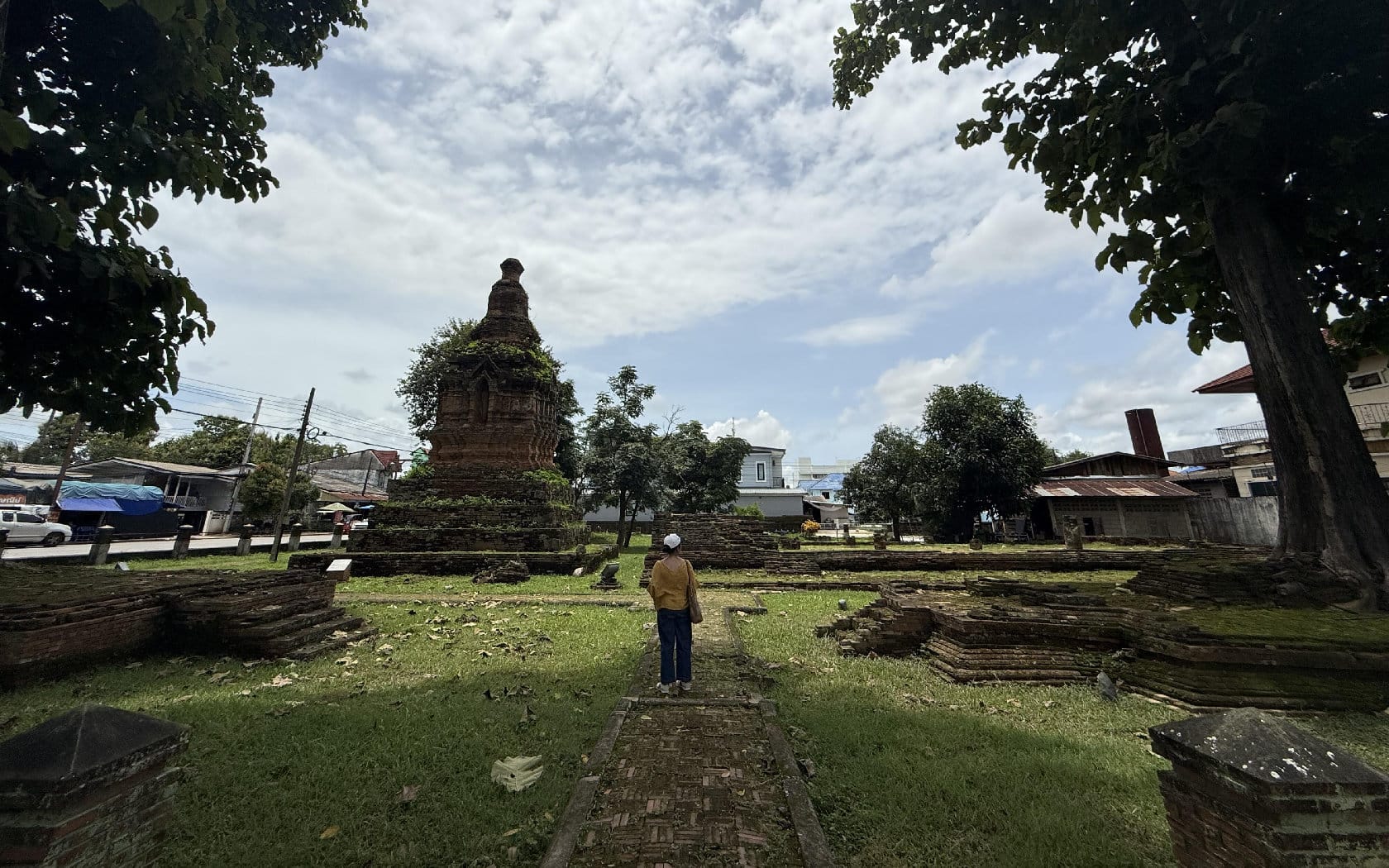

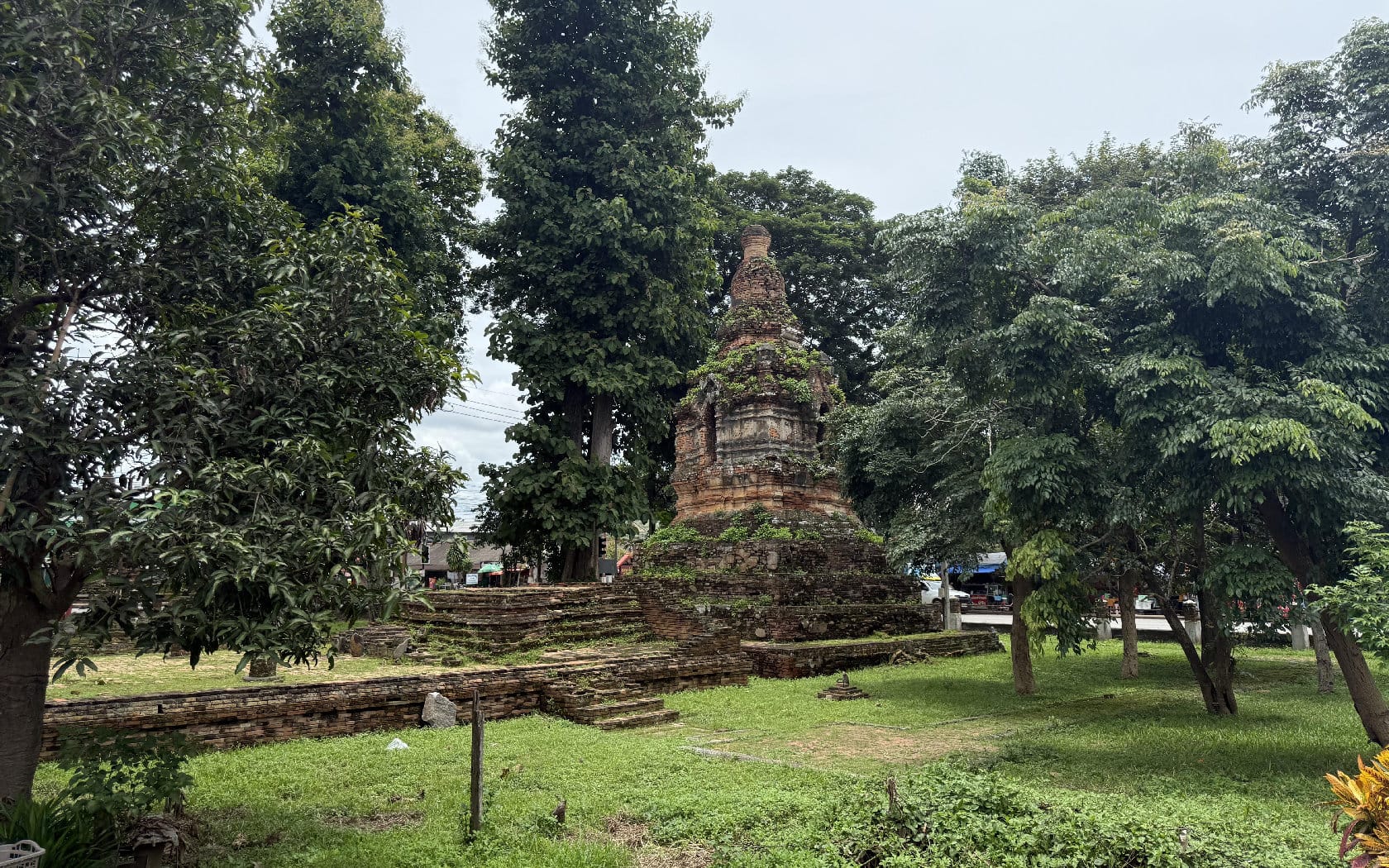
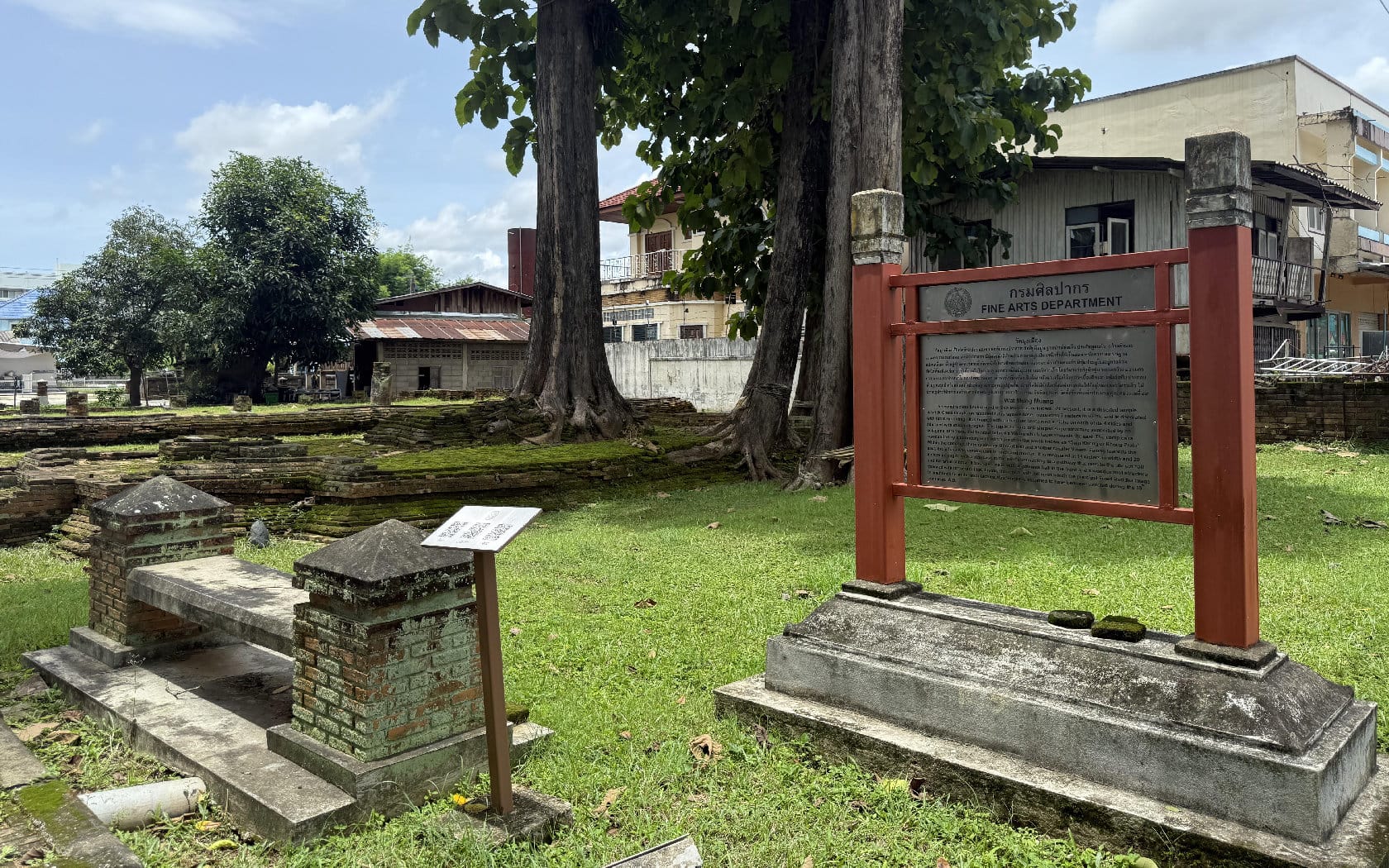
Wat Mung Muang
Right across from Wat Phra Buat lies a lesser-known treasure—a historic temple filled with rare and intricate architectural wonders. At its heart stands a stunning ancient stupa, built atop a four-tiered indented square base. Each side features a niche housing a standing Buddha in the “Opening the World” posture, a pose rarely seen today. Crowning the stupa is a rounded bell-shaped dome, with miniature corner stupas reminiscent of those at the famed Wat Pa Sak—a striking blend of elegance and spiritual symbolism. Surrounding the stupa, you’ll find remnants of Chiang Saen’s monastic past, including the Sala Lai (a traditional pavilion once used as monks’ quarters) and an ornate entrance gate called Pratu Khong, showcasing unique craftsmanship that has largely vanished from modern temple design. This temple may not make every travel guide—but for those who seek hidden beauty and historical richness, it’s a must-visit marvel of old Lanna art.
9

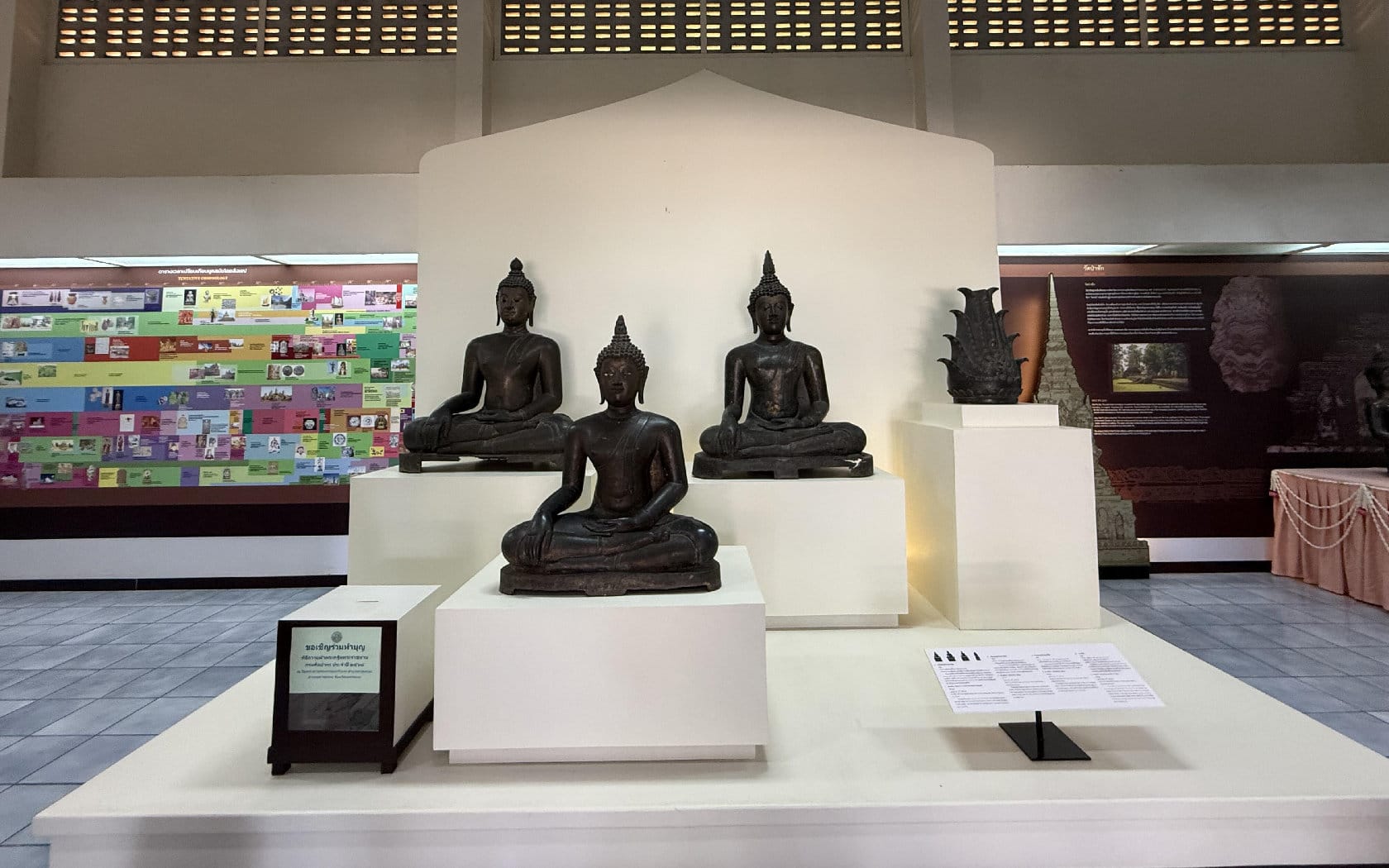
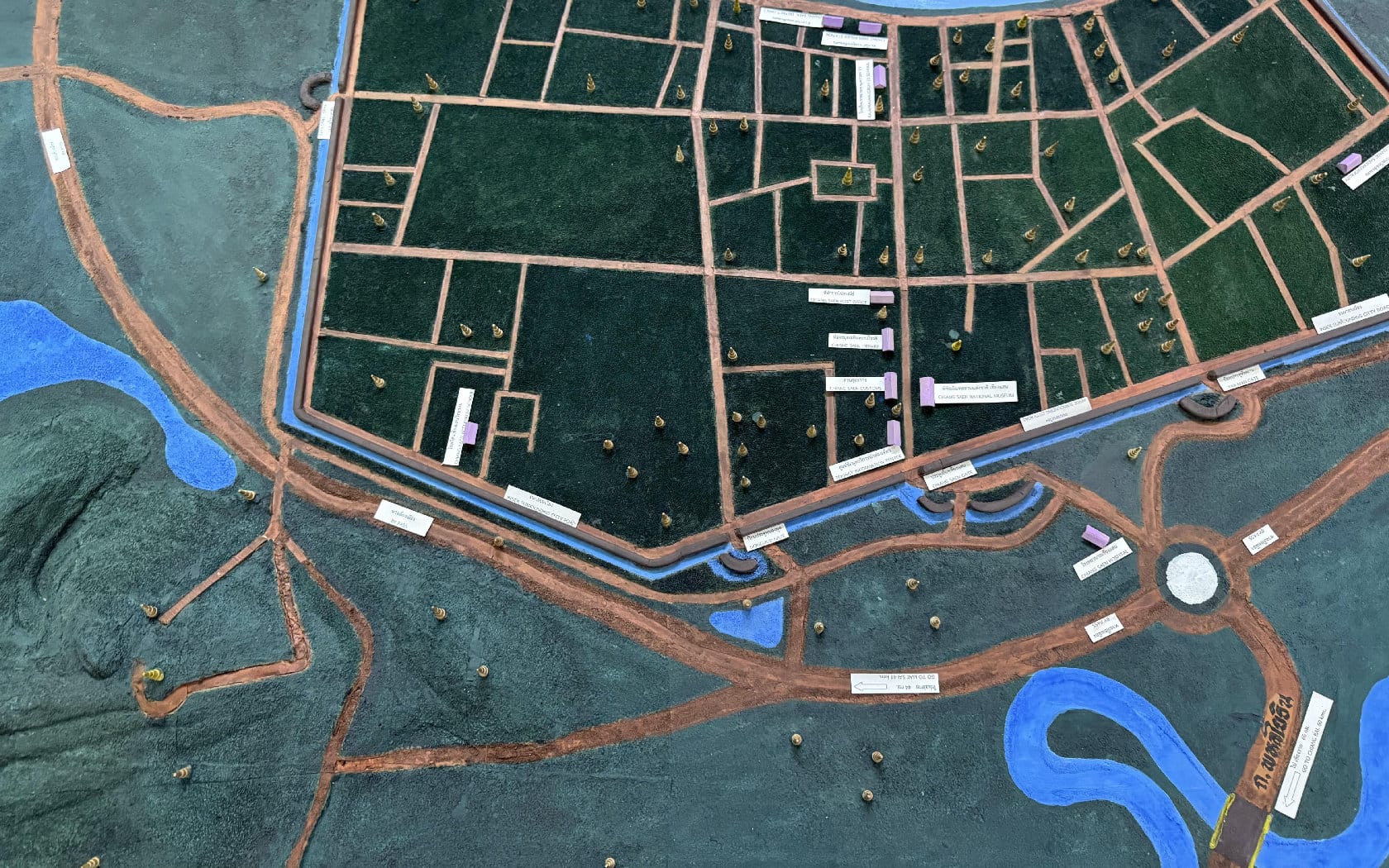


Chiang Saen National Museum
Located directly across from Wat Phra Mahathat, the Chiang Saen National Museum serves as your entry point to the rich history of this ancient city. This compact yet intriguing museum combines archaeology, art history, and cultural heritage, offering an overview of how Chiang Saen transformed from a modest settlement into a significant spiritual and cultural hub. Inside, you will find rare artifacts that showcase the beliefs, customs, and lifestyle of the local people—ranging from religious items such as Tung (Lanna ceremonial flags), sacred manuscript chests, and miniature stupas to ceremonial objects previously utilized in important spiritual rituals.
Don’t miss the highlights:
• The intricately carved Nāga face (Naga Kala)—a breathtaking example of 18th–19th century Lanna art
• Delicate stucco decorations from ancient stupas—still vivid with detail and symbolism
Opening Hours: Wednesday to Sunday | 8:30 AM to 16.30 (Closed on Monday and Tuesday)
Admission: Thai visitors: 10 THB | Foreign visitors: 100 THB
10
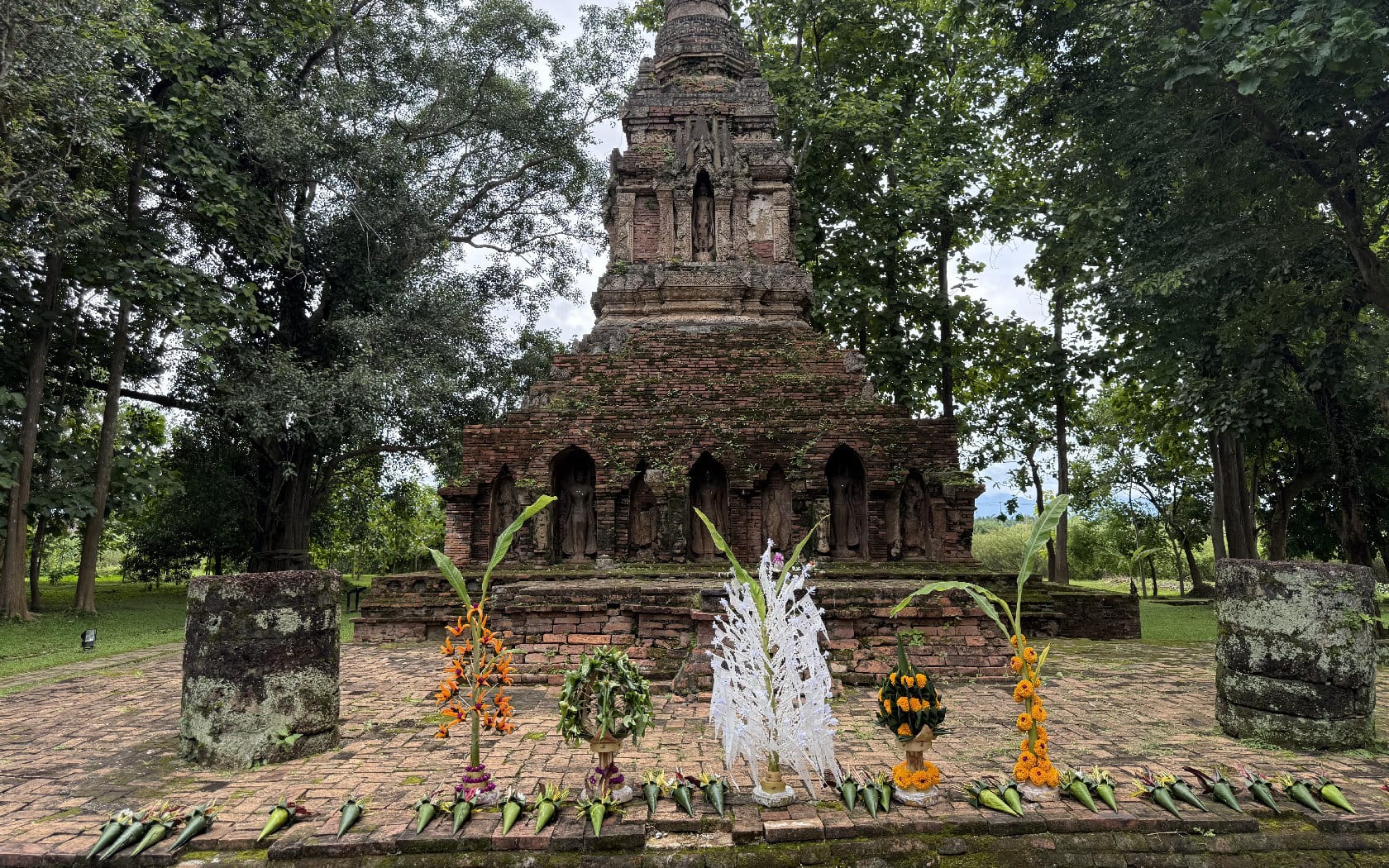


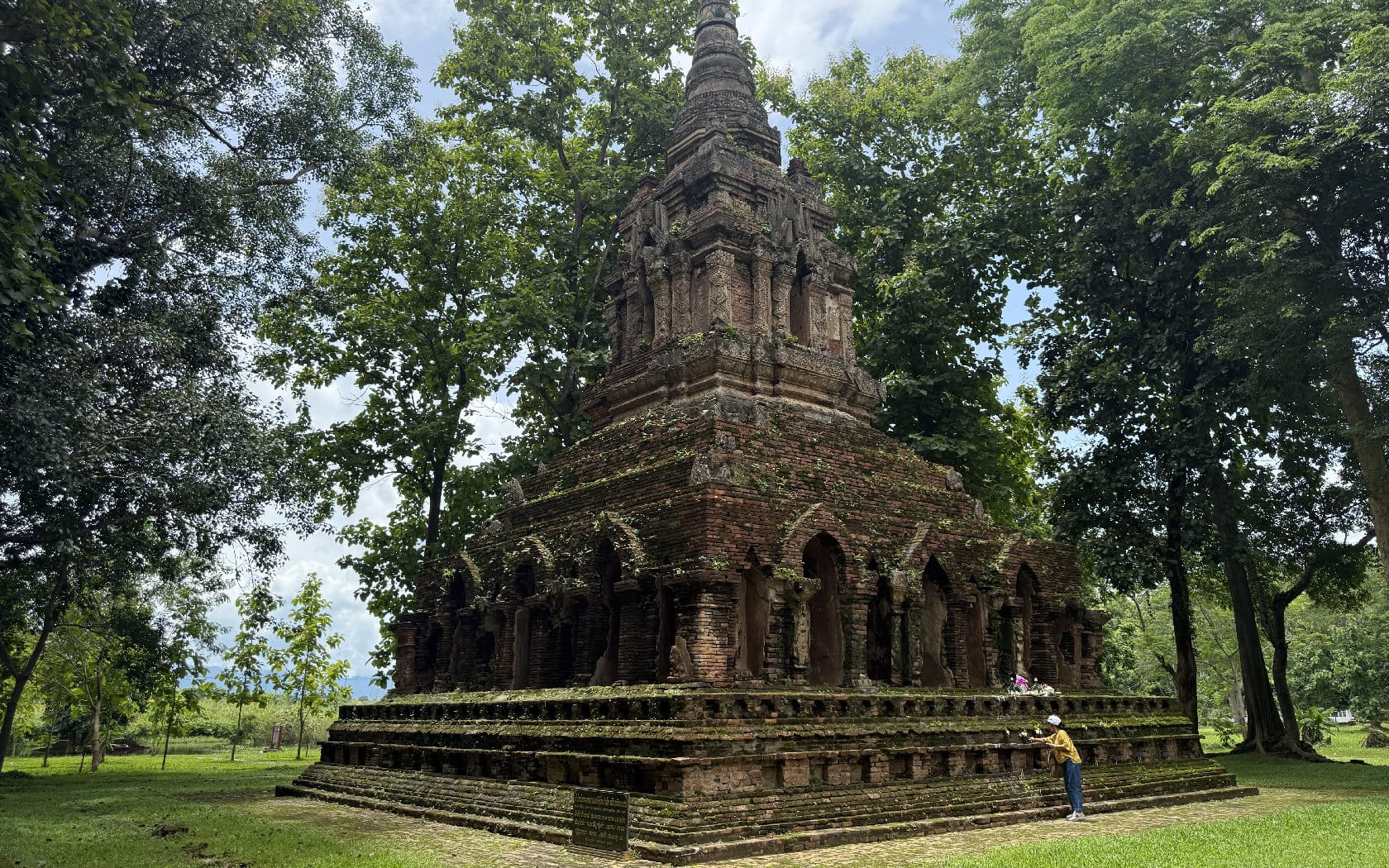

Wat Pa Sak
Step into the spiritual heart of Chiang Saen at Wat Pa Sak, one of the city’s most revered ancient temples. Built to enshrine a sacred relic—a bone fragment from the Buddha’s right ankle—this holy site spans over 16 lush rai and is surrounded by approximately 300 teak trees, which inspired the temple’s name, meaning “Teak Forest Temple.” The highlight of the site is the stunning five-spired Lanna-style stupa, remarkably well-preserved and heavily influenced by Hariphunchai art. At each corner, you’ll find smaller stupas that elegantly blend the styles of Sukhothai, Bagan, and Hariphunchai, creating a uniquely Lanna masterpiece. Upon closer inspection, you’ll notice intricate cross-cultural design elements: peony motifs from China, “Bai Raka” feather patterns from Myanmar, and mythical kala faces from Cambodia. These details reflect the rich tapestry of regional influences that shaped this exceptional site.
Cultural Tip: Offerings with a Lanna Touch For a meaningful visit, consider bringing a traditional “Suay Dok” flower arrangement—a beautiful form of Lanna floral art used in Buddhist offerings. You can choose from elegant styles such as the parrot beak or Phra Chao Nang Kon design, each possessing its own unique charm.
Opening Hours: Daily | 8:00 AM to 17.00
Admission: Thai visitors: 10 THB | Foreign visitors: 50 THB
